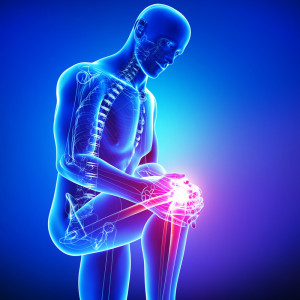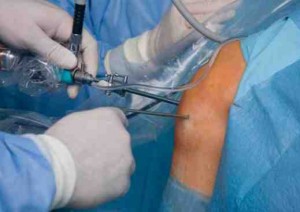Knee Arthroscopy
What is a Knee Arthroscopy?
 Knee Arthroscopy is a surgical process wherein the cartilage or tendons in the knee joint are viewed and repaired. This process involves a small incision in the knee, inside of which a small camera is placed inside of a small tube. This camera is used to view the inside of the knee joint and shows images of the interior on a video screen next to the doctor.
Knee Arthroscopy is a surgical process wherein the cartilage or tendons in the knee joint are viewed and repaired. This process involves a small incision in the knee, inside of which a small camera is placed inside of a small tube. This camera is used to view the inside of the knee joint and shows images of the interior on a video screen next to the doctor.
The Los Angeles knee specialist then reviews the inside of your knee joint until he finds the afflicted or damaged areas. Then, using the camera for guidance, he will make another small incision and insert miniature surgical tools as needed to fix the problem. This process offers faster recovery compared to open knee surgery, and the incision spot is quite small. After the process is complete, the Beverly Hills orthopedic doctor will stitch up the incision and create a recovery plan with you.
Who qualifies for Knee Arthroscopy?
This surgical process is one recommended after you have exhausted all non-surgical recovery options to no avail. If your knee continues to be inflamed, or the ligaments damages, or bone spurs are growing, you may need to exercise this medication option. Your doctor will recommend a surgeon who will review your medical history, as well as evaluate your current medical health, and speak with you about what the process entails and what will happen after.
You will likely need to visit your primary care physician in order to get blood work and regular check up tests completed to verify your current health conditions. You must also speak with the orthopedic surgeon in Los Angeles about any medications or herbal supplements you are taking. Some surgeons will recommend that you stop taking them two weeks before the procedure.
What happens before the Knee Arthroscopy?
 The hospital will talk to you about what is expected of you in terms of arrival time, clothing, and what things you are and are not allowed to eat and drink before the procedure. It is important that you follow their advice. If you have any questions, the staff can answer them.
The hospital will talk to you about what is expected of you in terms of arrival time, clothing, and what things you are and are not allowed to eat and drink before the procedure. It is important that you follow their advice. If you have any questions, the staff can answer them.
Generally, a local nerve inhibitor is applied to the area of the knee. This will inhibit the nerves which send pain signals to your brain from the knee. This will numb the area which will be operated on. If you opt for the local inhibitor, you will remain awake during the procedure. You can also opt for general anesthesia in lieu of the local inhibitor or in addition to. If you have both, you will help to offset the amount of pain felt in your knee after surgery.
What happens after the surgery?
After the surgery you will be discharged in a few hours. You should have a friend or family member take you home. After that, you should be able to wear a brace and get around on your own within a few weeks, depending on the severity of the surgery. You can, with doctor approval, likely return to work after one or two weeks.
References:
http://www.nlm.nih.gov/medlineplus/ency/article/002972.htm
http://www.nhs.uk/Conditions/Arthroscopy/Pages/Introduction.aspx
